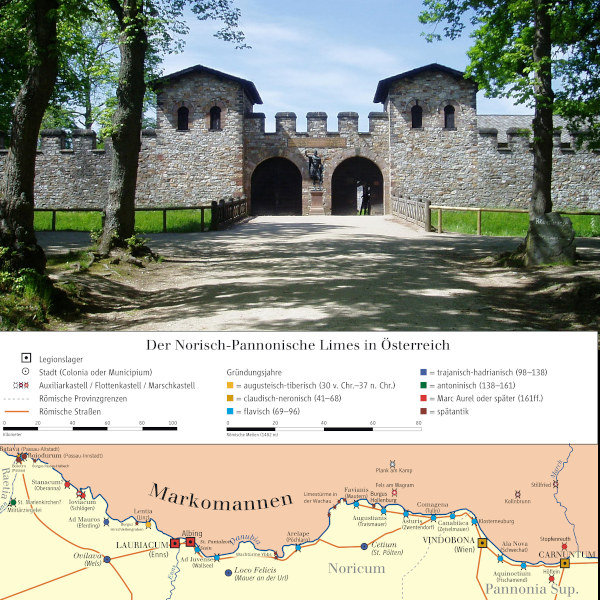DNA spotlight
Roman Fortress Klosterneuburg
Hidden beneath the Klosterneuburg Monastery in Austria lies an Ancient Roman fortress located along the famous Limes line. The exact Roman name for the fortress is believed to be Arrianis and is located very close to modern day Vienna. Early on, the fort served as a cohort camp for auxilliary troops (auxilla) and was the base of a cavalry unit. Their job was to monitor a Danube crossing and protect the Limes road from Vindobona to Lauriacum. The auxillia provided almost all of the Roman army cavalry and at its peak represented 60 percent of their overall land forces. The Limes (or limites in Latin) is the name for the fortified border between the Roman Empire and barbarian lands. the most famous section was the Limes Germanicus bordering Germanic and Rhaetian tribes.

Two sections of these Limes have been excavated in Germany totalling 550 km (Hadrians Wall in Britain is comparitively 118 km long). The fortress at Klosterneuburg was on the Limes Pannonicus denoting the frontier with the province Pannonia which stretched from Klosterneuburg to Taurunum in Serbia. The fortifications included walls, ditches, forts, fortresses and towns. Soldiers of the Limes were referred to as limitanei - unlike the regular Roman military they were largely of local descent. Their primary job was not to win large-scale wars but to deter small to medium sized raiding parties. Typically forts were found here at intervals of 14 kilometers.

Construction of the Limes was one of the most expensive projects of the ancient world. Emperor Trajan began its construction in 100 AD when the Roman Empire was at its most extensive. Several Roman emperors after Trajan were interested in maintaining the Limes so continuously added and expanded onto it. Hadrian converted the wooden and earthen structures systematically into stone barracks. Gaps between the camps were closed by a chain of watchtowers and signal towers. Late in the Roman Era huge inland camps were built and towns in the hinterland were fortitfied to create a second line of defence. Shown here is how the fortress would have appeared from above.

As shown here, an auxillia was armed with a basic sword, shield and armor - however instead of pilums they would receive spears. Whereas Legionaries would wear a red tunic, members of the Auxillia would often have green or white. They received less pay than their Italian counterparts and would have to serve 25 years in the Army to receive citizenship. Today a few defensive towers from the Limes survive in Austria - one in Bacharnsdorf, Mautern, Traismauer, Tulin and Zeiselmauer. A few watchtowers also stand in the Kuernberg Forest near Linz.
Sample: Late Roman Era Klosterneuburg Lower Austria
- Sample ID: R10656
- Year: 407 AD
- Sex: Male
- Location: 48.3099,16.3238
Sample: Chauci Auxilliary Klosterneuburg Fortress Lower Austria
- Sample ID: R10657
- Year: 126 AD
- Sex: Male
- Location: 48.3099,16.3238
Sample: Late Roman Era Klosterneuburg Lower Austria
- Sample ID: R10654
- Year: 407 AD
- Sex: Male
- Location: 48.3099,16.3238
Sample: Late Roman Era Klosterneuburg Lower Austria
- Sample ID: R10658
- Year: 407 AD
- Sex: Male
- Location: 48.3099,16.3238
Sample: Roman Klosterneuburg Fortress Lower Austria
- Sample ID: R10659
- Year: 126 AD
- Sex: Male
- Location: 48.3099,16.3238
Sample: Late Roman Era Klosterneuburg Lower Austria
- Sample ID: R10660
- Year: 407 AD
- Sex: Male
- Location: 48.3099,16.3238
